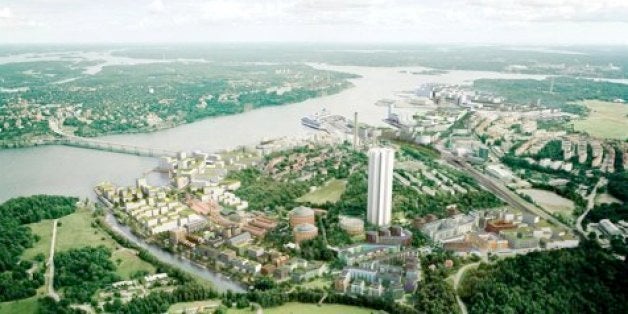
We have set the ambitious goal for the City of Stockholm to be -- not just climate neutral -- but fossil fuel free by 2040. We are fully aware that the city must excel in all aspects to reach our goal. Stockholm is already an acknowledged global climate leader, where energy efficiency and local production of renewables increases, while emissions and waste decreases. We can proudly say that the City of Stockholm has lowered its climate emissions by 44 percent since 1990 and we are soon to reach our new target of 2.3 tonnes/per capita (direct emissions). These targets and ambitions are being met while Stockholm continues to be one of the fastest growing cities in Europe. One of our main priorities is to make sure that Stockholm remains a sustainable city, while offering an attractive and inspiring living and working environment for all our citizens.
I am very proud that Stockholm is one out of three finalists in the Sustainable Communities category in the prestigious C40 Cities Awards, represented by our flagship urban development area, Stockholm Royal Seaport. Stockholm Royal Seaport is one of Europe's largest urban development areas and an international model for sustainable urban planning. When fully finished in 2030 the area will accommodate 12,000 new residential units and 35,000 workspaces. The city district will be highly resource efficient, designed to be adaptable to future climate changes, with green structures for wellbeing and ecosystem services offering a high quality of life. This 'smart city' focuses on people, their behaviours and needs.
Through planning and design, combined with modern technology and feed-back processes, the residents in Stockholm Royal Seaport will be able to make well-informed sustainable choices in their everyday life. We aim to limit carbon dioxide emissions from the Stockholm Royal Seaport area to below 1.5 ton per person by 2020, and anticipate the area will be fossil fuel free and climate positive by 2030.
To meet and share experiences with other cities is essential for a city to be able to be a frontrunner in the fight against climate change. The C40 Climate Positive and Sustainable Urban Development Networks workshop in Wuhan in November was an excellent example of the power of networking to help cities take climate action. At this meeting Stockholm's fellow finalist cities Johannesburg and Wuhan presented as well. This was one of many excellent opportunities provided by C40 for cities to share best practices and meet to discuss these important issues in-depth.
This post is part of a "C40 Cities" series produced by The Huffington Post and the C40 Cities Climate Leadership Group, in conjunction with the U.N.'s 21st Conference of the Parties (COP21) in Paris (Nov. 30-Dec. 11), aka the climate-change conference. The series will put a spotlight on the mayors of C40 cities, a network of the world's megacities committed to addressing climate change, and is part of HuffPost's What's Working editorial initiative. To view the entire series, visit here.